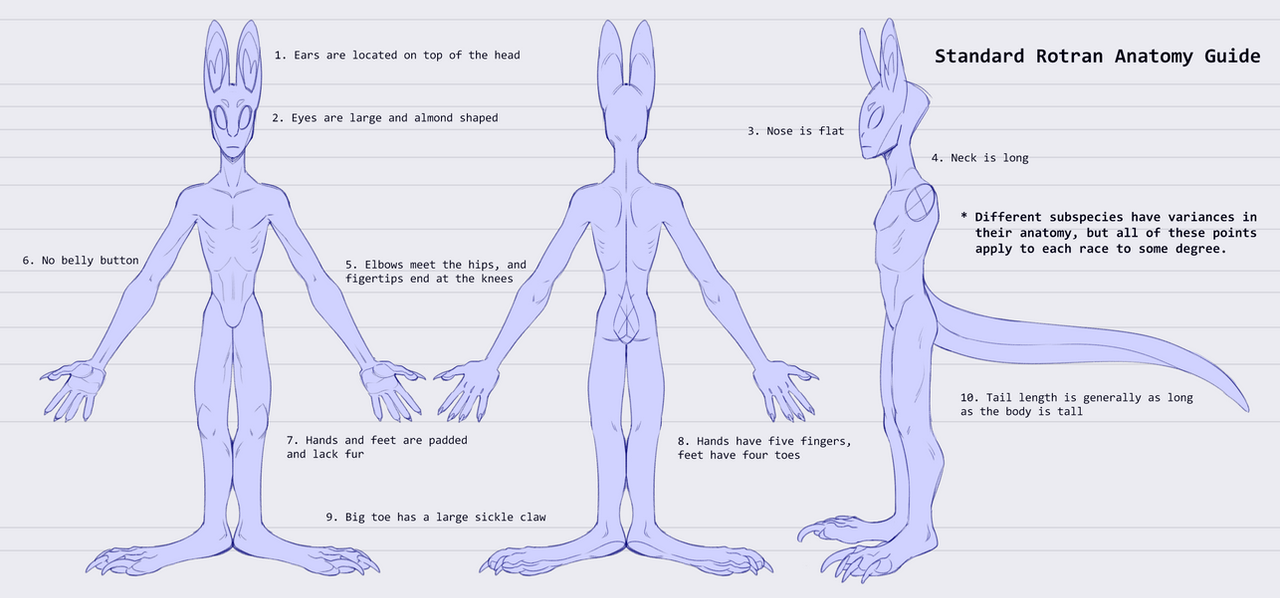HOME | DD
 SyIthian — [RR] - Rotran Anatomy
SyIthian — [RR] - Rotran Anatomy

#rotranroost #rotrans
Published: 2020-04-24 00:41:17 +0000 UTC; Views: 1213; Favourites: 26; Downloads: 0
Redirect to original
Description
Rotrans are a highly adaptable species, constantly micro-evolving through generations to thrive in the environments they live in. Mutation rates are high in their species, and new traits are constantly being discovered. On their home planet, there are no known diseases or viruses that cause sickness within their species; though disadvantageous genetic mutations and autoimmune disorders are common (medically speaking).
They are a hermaphroditic species with no sexual dimorphism between individuals. The sex drive in Rotrans is very low and they are only fertile for a few weeks every five Sondaran years. Sexual preferences differ between individuals, and not all Rotrans will bear children of their own. They are an egg-laying species, generally laying clutches of one to five, it varies with subspecies. Rotrans do not breastfeed and do not have breasts or nipples. Because they hatch from eggs, they do not have belly buttons.
Baby Rotrans, or Rooeys, hatch after an incubation period of 200 Sondaran days. Rooeys are born with teeth, and are able to eat solid foods from the moment they hatch. Though they are still heavily dependent on their parents for their first two years of life. Puberty and mental maturity occur between ages five and ten, with the average lifespan being 33 - 67 Sondaran years depending on the subspecies.
All Rotrans used the same neutral pronouns for each other before being introduced to other alien species. Most native Rotrans (born and raised on Sondara) still do, but many Rotrans raised off-world have grown used to gendered customs and using gendered pronouns, and will often choose to use them for themselves.
There are many different subspecies (most commonly referred to as races, but subspecies is also scientifically correct) of Rotrans, all with their own unique traits and abilities. Mixed-race Rotrans are uncommon outside of major cities on Sondara, but abundant in off-world colonies. The cities of Sondara are quite different from the more primitive lifestyles most Rotrans live in their natural habitats. Among these cities, life is far more technologically advanced than the rest of the planet. It is common practice in these large cities to take advantage of cosmetic science and change one’s appearance however they like, giving many Rotrans attributes from other subspecies, or even other species.

























